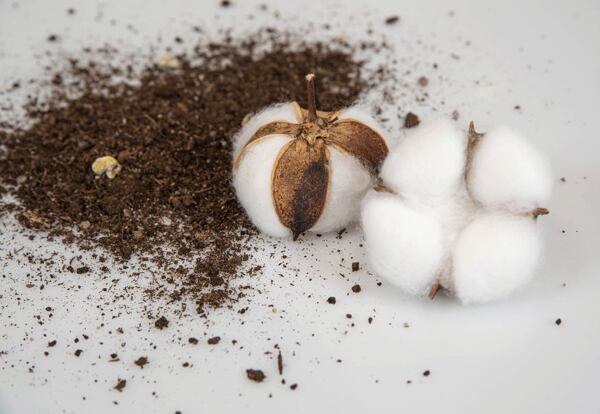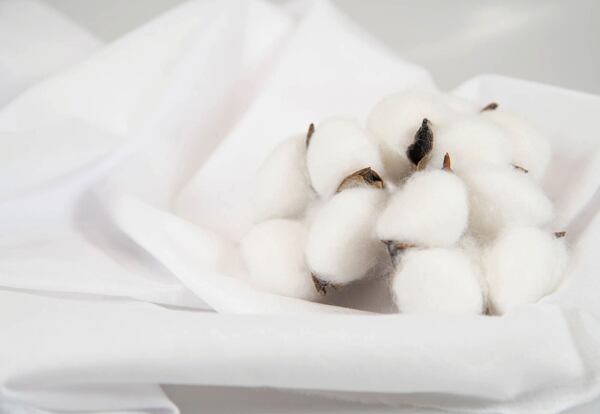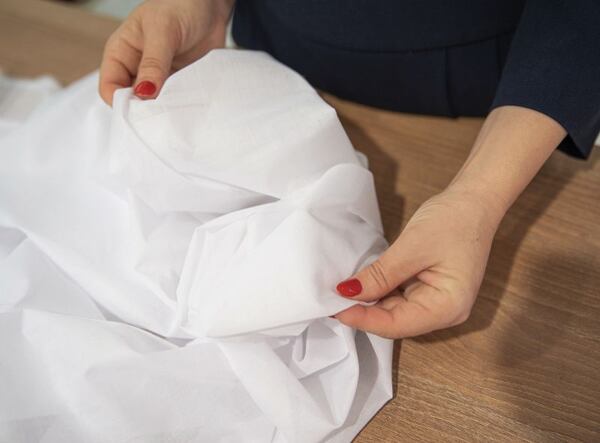
They say cotton is king, and there may be something to that. It’s probably the most popular textile out there – just think of all the times you’ve thrown on jeans and a t-shirt. The funny thing is that even though it’s been grown in Asia for almost 4,000 years, it didn’t make it to Europe until about the 13th century.
Cotton thrives in tropical and subtropical climes, so it’s really no surprise that its English name, cotton, derives from an Arabic word, qutun. It was also initially known in German as Kattun, a word that in now applies to a specific cotton fabric. As with any natural material, there are a number of factors that determine the final quality of the fabric it’s made into.
Growing premium quality cotton

How cotton is cultivated has an early and fundamental impact on its quality. Raw cotton fiber is harvested from the boll, the case where the cotton seeds mature. The length and fineness of the fibers are determined by the species of cotton plant, the temperature where it grows, the quality of the soil, and how much water it gets. The longer the fibers, the smoother, stronger, and better the yarn. Good yarn makes good fabric, no matter whether it’s a weave or a knit. Fabrics where the yarn is made of worse, shorter fibers don’t hold their shape well and tend to pill. They are easily damaged in the wash and may eventually tear. Cheap t-shirts are usually made of poor-quality cotton – and you know how long they last.
The cotton plant
There are four main types of cotton plant in commercial cultivation today: Upland cotton (Gossypium hirsutum), pima cotton (Gossypium barbadense), tree cotton (Gossypium arboretum), and Levant cotton (Gossypium herbaceum).
- The lion’s share of cotton production comes from upland cotton, which accounts for over 90%. This is generally a cotton of average quality, but there are varieties that produce a longer fiber. This type of cotton is most often grown in India and Pakistan, with improved varieties in Mexico and the United States.
- The second most common is pima cotton, which produces an exceptionally long fiber. It is grown in a number of places, including India, Brazil, Peru, the United States, and Egypt. The “Egyptian cotton” used to make premium bedding is of this type. Pima grown in the Americas is generally used for apparel.

- Tree cotton and Levant cotton are older, historical varieties of cotton plant that are now cultivated only in a few places. For example, Bengal tree cotton is used to make traditional, fine, hand-woven fabrics like those made centuries ago.
Organic cotton
There has been a lot of talk recently about organic cotton. Conventional cotton production is fairly hard on the environment – it consumes enormous amounts of water and utilizes chemical pesticides to protect it from the diseases and pests to which it is vulnerable. Cotton cultivation greatly depletes the soil (which must then be fertilized artificially). As a rule, cheap cotton is the least ecological because growers are forced to use larger amounts of cheap chemicals just to achieve a good harvest and break even, and they often can’t afford to think about the impact of their actions on the environment, or even their own health.
When shopping for organic cotton, look for the Global Organic Textile Standard (GOTS) certificate. GOTS is a strict, international standard, that covers all phases of cotton production and even includes fair trade aspects – cultivation must not harm the environment or people.
Processing cotton fibers and fabric
A number of things can be done to enhance cotton quality. (Of course, if you start out with a poor quality, short-staple cotton, the improvement can only go so far – no amount of technology can transform it into something better.) Here are some of the ways cotton is treated before it makes its way to your closet.
Combing
Cotton is combed much as wool is. Combing separates the long fibers from the shorter lint fibers (the lint is then used for things like cotton swabs). Fabrics made from combed cotton use the longer fibers, so they keep their shape better and don’t fuzz or pill.
Mercerization
Cotton has been mercerized ever since the mid-nineteenth century. It is soaked in an alkaline solution, yielding a stronger, smoother, shinier thread that is less prone to shrinkage and takes dye better.
Singeing
Both cotton yarn and fabric can be singed with a controlled flame to remove stray fibers that rise above its surface. This yields a smoother finish, for non-pilling fabric that is better suited for dyeing and printing.
Cross-linking
Cross-linking is a chemical treatment that reduces shrinkage and creasing. Some producers may use questionable chemicals and methods when curing the fabric, while others employ newer, more ecological approaches.
Fabric finishes
After weaving or knitting, fabric can be finished either mechanically, chemically, or by the application of heat to improve its appearance and qualities – for example, it may be cured with a special resin for a smooth finish. Sometimes finishing brings benefits (like making your shirt wrinkle-free) and at other times it may just be an attempt to temporarily enhance the look and feel of a fabric until the magic washes out.
How to tell top quality cotton
So, how can you know that what you’re getting is top quality cotton? Of course, it can’t hurt to ask the seller. But beyond that you can also start by gathering some basic information for yourself – which is what we always do. Companies that make fabric and clothing out of quality materials generally boast about it in their product descriptions – the information should be as concrete as possible and if necessary, as with organic cotton, backed up by a certificate.
The next step is to actually, physically get your hands on the fabric. We never buy sight unseen and neither should you. If you have never paid much attention to cotton fabrics before, it may take you a while to get the hang of it, but once enough samples have gone through your hands, you’ll start to get your bearings. Go to your local fabric shop and give a good feel to the cheaper cotton they have in stock – then compare it to a more expensive quilting cotton or come try our first-rate cottons.

You will notice that good quality cotton is smoother to the touch and there’s not as much fuzz on the surface as with cheaper fabrics. The same applies for fine, lightweight fabrics like batiste – they shouldn’t have any surface fuzz and the yarn should be fine and uniform. Quality cotton knits, too, should be smooth to the touch, flexible when pulled, and when stretched in any direction should return to their original shape.
The final test for any fabric is in the washing and wearing. When we get fabric samples from our suppliers, we wash them, steam them, and iron the heck out of them to make sure that they hold their shape, retain their surface feel, and are colorfast. We recommend you do the same, especially if you are embarking on a major project with expensive fabric.
Brand-name cotton manufacturers generally have reliable quality. But with unmarked goods in fabric shops things can be touch-and-go… the shop may get their next shipment from a different supplier and the quality can vary. Unless you sew often, you will just have to rely on what you can see and feel for yourself and take the sales clerk’s word. In the end, it’s always best to be a regular fixture in your local fabric shop and keep yourself in the swim.
How important is fabric quality to you when you’re shopping?
Have you ever unearthed a cotton treasure when fabric shopping?
What’s your favorite brand for cotton fabrics?



Comments(1)